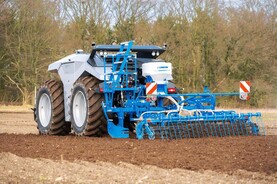As fertility builds up, sod strength seems to weaken and ground seems to become more liable to poaching. I thought I was the only one experiencing this until I had a conversation with a family that have switched from tillage to dairying.
At first the tillage ground was relatively low in organic matter and was resistant to stock damage to a great extent but as time went on and fertility and especially organic matter built up, grassland management had to improve. I seem to be at that stage now and even though we have only weanlings out, a certain amount of damage is being done as we clean up from paddock to paddock. That said, we have had a lot of rain since the middle of August and even though the ditches are not particularly full, it’s clear that the ground capacity to absorb more rainfall is becoming more limited, at least in our part of the country.
The lack of settled dry spells has also had its effect on the tillage side. While we have the barley and oilseed rape all sown and rolled, last week was the first time for many years where we had the plough, followed directly by the drill.
While we got both seed and the commercial wheat sown, it rained heavily so we had to abandon any thought of rolling. I don’t like not being able to roll – a good firm seed bed is desirable for germination but also it gives assurance at harvest time that stones, likely to cause damage, are squeezed down into the soil. We still have to sow our gluten-free oats. While we attempted to plough the ground, it’s clear that I made a mistake in stubble cultivating the oilseed rape ground into which the oats is going.
Oilseed rape stubble is loose enough anyway so the stubble cultivation simply left more exposed soil to absorb the water. A dry spell is promised for the middle and end of this week, so hopefully that will finish the winter sowing.
We tried ploughing the ground but the soil itself turned up much wetter than I would like, so we decided to leave it for a few days.






 This is a subscriber-only article
This is a subscriber-only article










SHARING OPTIONS: